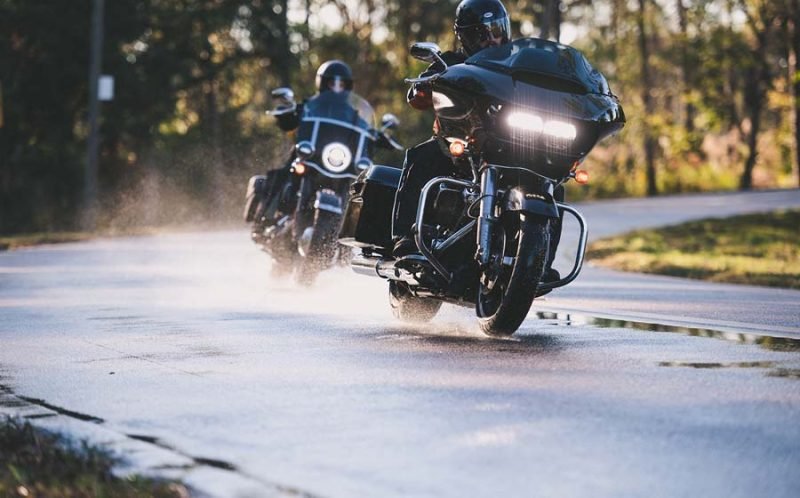
According to the National Highway Traffic Safety Administration( NHTSA), a motorcyclist is 29 times more prone to die in collisions than other motorists. Rainy weather can make the roads slippery, and your visibility and stopping ability get hampered. When riding a motorcycle in the rain, be prepared.
Unlike automobiles with airbags and crumple zones, motorcycles don’t have to compensate for the impact of a crash with another vehicle or object. If you get into a motorcycle accident, consult a motorcycle accident lawyer in myrtle beach to evaluate your case. But as they always say, prevention is better than cure. Here are some safety tips for riding a motorcycle in the rain;
Reduce Your Speed
Always reduce your speed when riding in the rain because your motorcycle has lost 25-30% traction. Also, when it rains, visibility reduces, and it becomes more difficult to judge the distance between vehicles on the road. If you are going fast in wet conditions, you could easily hit another car or lose control of your bike.
Choose Right Gear
You must also pick the right clothes. For example:
- Waterproof jacket
- Waterproof pants
- Wear gloves with good grip and padding on the palms to firmly hold onto the handlebars
- Wear a helmet with a visor to protect yourself from debris, such as bugs or even rocks kicked up by other vehicles
- Waterproof shoes
Avoid Standing Water
Motorcycles are vulnerable to hydroplaning when water builds up between the tire and the road. It can cause the bike to lose traction, especially at high speeds. Avoid this danger by slowing down, and be careful around puddles if you can’t avoid them.
Keep Your Brake and Tail Lights Clean
Cleaning your motorcycle’s lights increase visibility in rainy weather. Dust and dirt on your brake and tail lights can cause them to become less visible, so keep them clean before you hit the road.
Be Extra Cautious at Intersections
When visibility is low, it’s hard to see other vehicles. It means you cannot tell if a car is turning left or right from your perspective.
Even when visibility is good, it’s easy to underestimate how far you are from other vehicles. You may think you have enough time to make it through an intersection before the light changes, but when you’re on a motorcycle, braking distances are much shorter than in cars. If someone turns into your path just as you’re passing through an intersection, there won’t be anything you can do about it!
Cars might not expect motorcycles to appear in their blind spots suddenly, so ensure other drivers know where you are. It means keeping your head up and looking for other vehicles before entering an intersection or passing another car.
Keep Your Distance from Other Vehicles
Keeping your distance from other motor vehicles will avoid having to brake suddenly, which can cause skidding and loss of control.
If you need to brake suddenly, staying in your lane is better than swerving into another lane. It will keep you out of the way of other drivers who might not be paying attention and prevent them from turning into you while trying to avoid hitting someone else.
Wear Bright Colors
Bright colors will help you stand out from other drivers and motorists in the rain.
Ensure the Tyres are In Good Condition
Keep your tires properly inflated to provide maximum traction on wet surfaces. Underinflated tires can overheat and blow out, offering less traction. Check your tire pressure before every ride, even if you don’t ride, because they may lose pressure due to exposure to heat from sunlight.
Use Headlights and Taillights
In low-visibility conditions such as heavy rainstorms, fog, or snowstorms, headlights help you see better, and other drivers can see you on the road. Use them during inclement weather to avoid crashes caused by poor visibility. Taillights also help drivers behind you know where your motorcycle is.
Use Proper Body Positioning
Maintain a low center of gravity by keeping both feet firmly on the footpeg; this will allow you to apply maximum braking power while maintaining control over your bike. Also, keep both hands on the handlebars so you don’t have to search for them when trying to maintain control during hard braking or cornering maneuvers.
Riding in the rain is challenging and dangerous. However, with the proper precautions, riding a motorcycle in the rain can be safe and rewarding. Riders must use extra caution when operating their motorcycles in wet weather. You must ensure that you’re protected by wearing all the right gear, planning your ride, and staying alert on the road.









